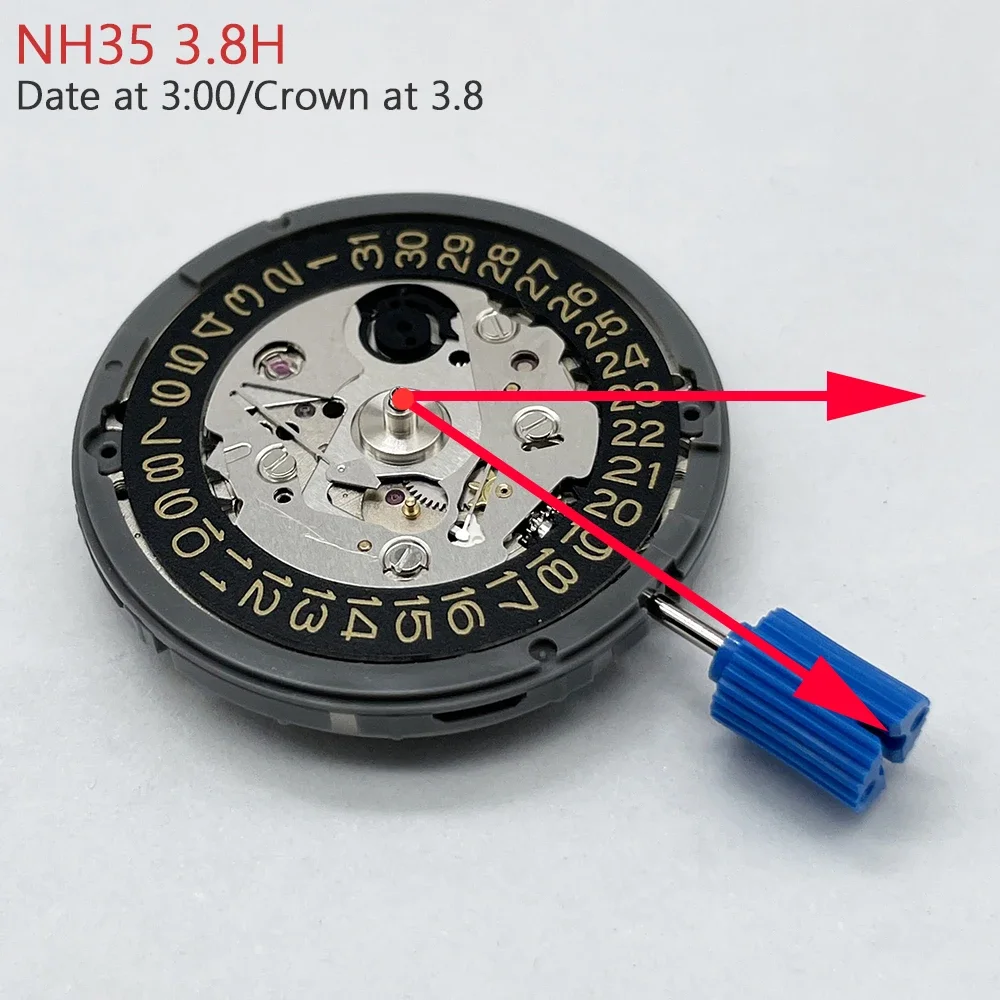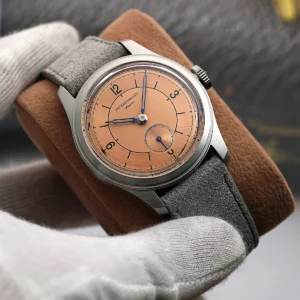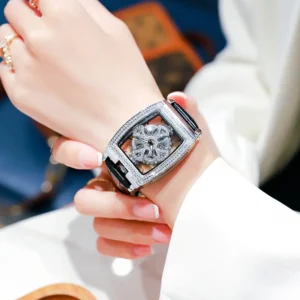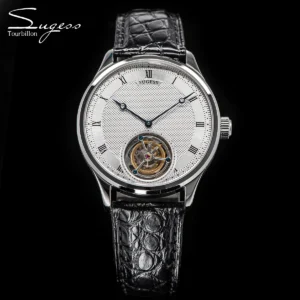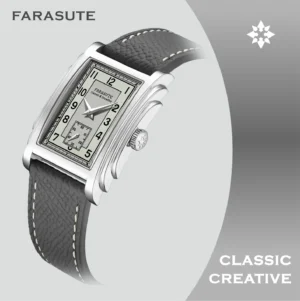Introduction: Understanding Chronograph Movement Types
A chronograph watch is essentially a timepiece with a stopwatch function built into it. Beyond telling the time, these sophisticated watches feature additional sub-dials that can track elapsed minutes and hours, along with pushers (buttons) on the side of the case that start, stop, and reset the timing function. When exploring the world of mechanical chronographs, you’ll encounter two primary power systems: manual and automatic movements.
Both types share the same fundamental principle of using a mainspring to store energy, which is then released through a gear train to power the watch’s functions. This mechanical heart beats without batteries, representing centuries of watchmaking tradition and engineering excellence.
Understanding the differences between manual and automatic chronograph movements is crucial whether you’re making your first serious watch purchase or expanding your collection. Each type offers distinct advantages and characteristics that align with different wearing styles and preferences.
The history of dive watch engineering shares many parallels with chronograph development, as both represent significant horological achievements that combine practicality with mechanical artistry.
The Fundamentals of Mechanical Chronograph Movements
At their core, both manual and automatic chronograph movements share the same mechanical foundation. A chronograph mechanism is essentially a stopwatch function integrated with a standard timekeeping movement, creating one of watchmaking’s most complex and admired complications.
The chronograph function works through an intricate system of gears, levers, and wheels that connect to the main timekeeping mechanism. When activated by the pushers, this system engages wheels that drive the chronograph hands while allowing the timekeeping functions to continue uninterrupted. The chronograph mechanism can be designed with either a column wheel (considered more refined) or cam-actuated system (typically more robust).
What makes these movements truly special is that everything happens mechanically, without electronics or batteries. Energy flows from the wound mainspring through the gear train, regulated by the balance wheel and escapement, to power both the timekeeping and chronograph functions.
The craftsmanship required to create these intricate mechanisms represents the pinnacle of mechanical watchmaking art, with hundreds of components working in perfect harmony within a space smaller than a coin.
For those interested in the technical details, understanding chronograph movement watches provides fascinating insights into how these complex timing mechanisms function.
Manual Chronograph Movements: The Traditional Approach
Manual chronograph movements represent the original and most traditional approach to mechanical watchmaking. These movements require the wearer to physically wind the watch by turning the crown, typically once daily. This action tightens the mainspring, storing energy that will gradually be released to power the watch.
The winding process creates a unique ritual between the watch and its owner. Each morning, taking a moment to wind your timepiece establishes a physical connection to the mechanical marvel on your wrist. This tactile experience of feeling the resistance build as the mainspring tightens offers a direct link to centuries of horological tradition.
Inside a manual chronograph, the movement architecture is focused on pure mechanical efficiency without the additional self-winding mechanism. This allows watchmakers to create movements that showcase the chronograph works in their most unadulterated form. Historically significant manual chronograph calibers like the Valjoux 72 and Lemania 2310 are revered for their beautiful engineering and reliable performance.
Our manual wind watches collection showcases timepieces that celebrate this traditional approach to chronograph watchmaking.
Advantages of Manual Chronograph Movements
Slimmer Profile: Without an automatic winding system and rotor, manual chronographs can be designed with thinner cases, often 1-2mm less than their automatic counterparts. This creates a more elegant profile that slides easily under a shirt cuff.
Enhanced Movement Visibility: Manual movements offer an unobstructed view through display casebacks, allowing appreciation of the entire chronograph mechanism without a rotor blocking the view.
Direct Connection: The daily winding ritual creates a unique bond between watch and wearer, fostering appreciation for the mechanical nature of the timepiece.
Mechanical Simplicity: With fewer components than automatic movements, manual chronographs potentially face fewer complications during service intervals.
Lighter Weight: The absence of an automatic winding system makes these watches typically lighter on the wrist, enhancing comfort during extended wear.
For those who appreciate elegance in watchmaking, our manual wind dress watches offer refined timepieces with beautifully finished visible movements.
Challenges of Manual Chronograph Movements
Daily Winding Requirement: Forgetting to wind your watch means it will eventually stop running, typically after 40-50 hours when the power reserve is depleted.
Varying Power Delivery: As the mainspring gradually unwinds, the power delivered to the movement can decrease slightly, potentially affecting timekeeping precision toward the end of the power reserve.
Crown Component Wear: After decades of daily use, the winding mechanism components may experience wear, though this is rarely an issue with proper care.
Daily Routine Commitment: For those with busy or unpredictable schedules, remembering to wind the watch daily requires dedication and routine.
Winding Technique Learning Curve: New owners must learn proper winding pressure and technique to avoid overwinding or damage to the crown.

Automatic Chronograph Movements: Self-Winding Innovation
Automatic chronograph movements represent a significant advancement in mechanical watch technology. These self-winding movements harness energy from the natural motion of your wrist through a weighted semicircular rotor that pivots freely as you move. This rotor is connected to the winding system, automatically tightening the mainspring without manual intervention.
The development of automatic chronograph movements marked a watershed moment in watchmaking history. In 1969, after years of intense competition, the first automatic chronographs were introduced to the market, forever changing the landscape of mechanical watchmaking. These movements incorporated all the complexity of a chronograph while adding the convenience of self-winding capability.
The engineering challenge was substantial—integrating an oscillating weight into an already complex chronograph mechanism required innovative design solutions. The rotor system can be designed to wind in one direction (unidirectional) or both directions (bidirectional), with each approach offering different efficiency characteristics.
Creating space for this additional mechanism while maintaining reliability and accuracy demonstrates the remarkable ingenuity of watchmakers who pushed the boundaries of mechanical miniaturization.
For those interested in experiencing this engineering marvel, our automatic chronograph watches collection showcases outstanding examples of self-winding timing precision.
Advantages of Automatic Chronograph Movements
Self-Winding Convenience: With regular wear, automatic chronographs maintain power without daily manual winding, making them exceptionally user-friendly.
Extended Power Reserve: Many modern automatic chronographs offer power reserves between 42-70+ hours, longer than many manual counterparts.
Consistent Power Delivery: The automatic winding system keeps the mainspring at an optimal tension level when worn regularly, potentially contributing to more stable timekeeping.
Daily Wear Practicality: The “set and forget” nature of automatic movements makes them ideal for busy individuals who wear their watch daily.
Contemporary Appeal: Many watch enthusiasts appreciate the technical advancement that automatic winding represents, combining tradition with innovation.
For information about the durability of these self-winding marvels, our article on how long automatic watches last provides valuable insights into their longevity.
Challenges of Automatic Chronograph Movements
Increased Case Thickness: The rotor mechanism typically adds 1-2mm to case thickness, resulting in watches that sit higher on the wrist.
Greater Complexity: More moving parts mean more complexity during servicing, potentially leading to higher maintenance costs.
Rotor Noise: Some wearers may notice a slight sound or sensation from the rotating mass when moving their wrist quickly.
Partially Obscured Movement View: The rotor partially covers the movement when viewed through a display caseback, limiting the view of the chronograph mechanism.
Higher Price Point: The additional complexity and components of automatic mechanisms typically result in higher costs than comparable manual models.
Movement Comparison: Manual vs. Automatic Chronographs
| Feature | Manual Chronograph | Automatic Chronograph |
|---|---|---|
| Winding Method | Daily hand-winding required | Self-winds with wrist movement |
| Convenience | Requires daily attention | “Set and forget” functionality |
| Case Profile | Typically thinner (1-2mm) | Generally thicker due to rotor |
| Weight | Lighter on wrist | Slightly heavier due to rotor |
| Movement Visibility | Complete view of mechanism | Partially obscured by rotor |
| User Interaction | Daily winding ritual | Minimal interaction needed |
| Cost Factors | Often more affordable | Premium for self-winding feature |
| Maintenance | Simple mechanics, fewer parts | More complex with additional parts |
| Power Reserve | Typically 40-50 hours | Often 42-70+ hours |
| When Unworn | Stops after power reserve depletes | Stops after power reserve depletes |
| Collector Appeal | Traditional, purist approach | Modern convenience with tradition |
This comparison highlights that neither movement type is inherently superior—each offers distinct characteristics that appeal to different preferences and lifestyles. The detailed inner workings of chronograph watches demonstrate how these different approaches achieve the same timing functionality through different mechanical philosophies.
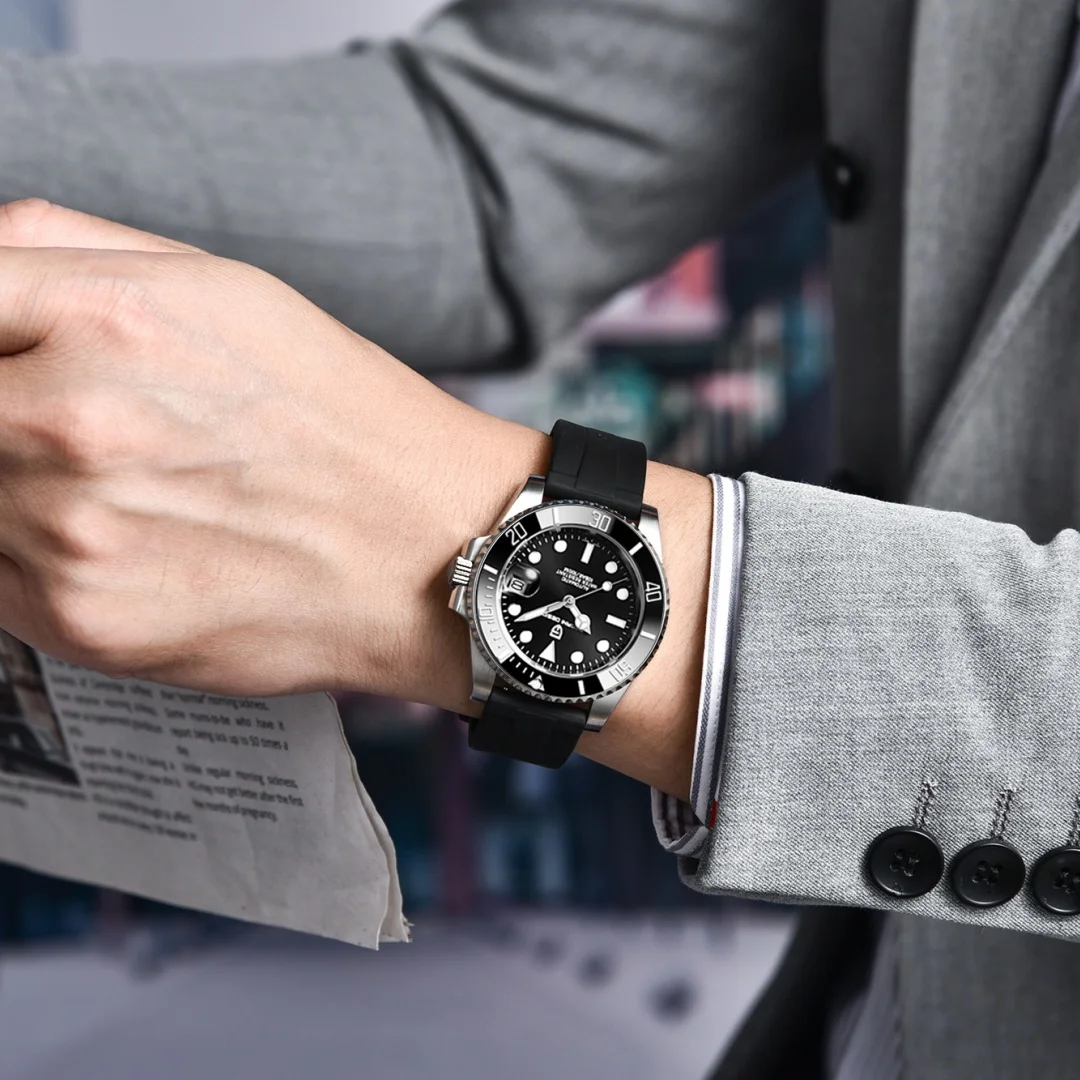
Lifestyle Considerations: Choosing the Right Movement
Your personal lifestyle plays a crucial role in determining which chronograph movement will serve you best. Consider how a watch fits into your daily routine and wearing habits when making your selection.
For those who wear the same watch daily, an automatic chronograph offers unmatched convenience. The natural motion of your wrist throughout the day ensures the watch remains wound and ready. However, if you rotate between several watches throughout the week, a manual chronograph might be more practical as you’ll be winding each watch when you decide to wear it anyway.
Activity level also influences your choice. Very active individuals find automatic movements stay perfectly wound, while those with more sedentary lifestyles might need to supplement with occasional manual winding even with automatic watches.
Some collectors develop deep appreciation for the daily ritual of winding a manual chronograph, seeing it as a moment of connection with their timepiece. Others prefer the “set and forget” nature of automatics, valuing convenience over interaction.
The evolution of dive watch technology parallels chronograph development in many ways, with both complications evolving to meet the practical needs of different users while preserving mechanical artistry.
Automatic Chronograph Watches, Chronograph Pilot Watches
Price range: $233.36 through $237.58 Select options This product has multiple variants. The options may be chosen on the product pageAutomatic Chronograph Watches, Classic Style Dive Watches
$3,053.06 Select options This product has multiple variants. The options may be chosen on the product pageClassic Manual Wind Watches, Manual Wind Dress Watches
Price range: $425.50 through $462.50 Select options This product has multiple variants. The options may be chosen on the product page- $104.12 Select options This product has multiple variants. The options may be chosen on the product page
Automatic Skeleton Watches, Classic Manual Wind Watches, Manual Wind Dress Watches, Mechanical Skeleton Watches
$1,944.80 Select options This product has multiple variants. The options may be chosen on the product pageClassic Manual Wind Watches, Manual Wind Dress Watches, Square & Rectangular Automatic Watches
$884.95 Select options This product has multiple variants. The options may be chosen on the product page
Advanced Chronograph Functionality in Both Movements
Both manual and automatic chronographs can feature sophisticated timing functions beyond basic stopwatch capabilities. These advanced complications showcase the heights of watchmaking artistry regardless of winding mechanism:
Flyback Function: Allows resetting and restarting the chronograph with a single push, without having to stop it first—particularly useful for timing consecutive events.
Split-Seconds (Rattrapante): Features an additional seconds hand that can be stopped independently to measure intermediate times while the main chronograph continues running.
Column Wheel Mechanism: A precision component that ensures smooth pusher operation and precise chronograph engagement, generally considered superior to cam-actuated systems.
Monopusher Design: Controls all chronograph functions (start, stop, reset) through a single pusher, representing a purer, more historical approach to chronograph design.
These advanced features can appear in both manual and automatic chronographs, though they add complexity to either movement type. The decision between manual and automatic becomes secondary when considering these specialized complications, as the functionality often becomes the primary consideration.
The enduring legacy of chronograph complications traces how these advanced functions have evolved while remaining true to their mechanical roots.
Maintenance and Longevity Considerations
Both manual and automatic chronograph movements require periodic maintenance to ensure optimal performance and longevity. Typically, mechanical chronographs should receive professional servicing every 5-7 years, regardless of winding type.
Manual chronographs may experience wear on crown components over decades of daily use, while automatic movements have additional parts like the rotor and winding mechanism that require maintenance. However, both movement types are designed for decades of reliable service when properly maintained.
When storing watches for extended periods, manual chronographs can simply be left unwound until ready to wear again. Automatic chronographs should ideally be stored fully wound (either manually wound or using a watch winder) to keep lubricants properly distributed throughout the movement.
From a value retention perspective, both movement types can become collectible, though historically significant manual chronographs have often demonstrated strong value appreciation due to their connection to watchmaking heritage.

Is a Manual or Automatic Chronograph Better for You?
To determine which chronograph movement best suits your needs, consider these key questions:
How often will you wear the watch? If you plan to make this chronograph your daily timepiece, an automatic movement offers convenience and consistent power. For occasional wear or as part of a rotation, a manual movement might make more sense.
Do you appreciate the ritual of watch winding? Some enthusiasts find the daily interaction with their manual chronograph deeply satisfying and connecting. Others prefer the convenience of an automatic that’s always ready to go.
Is case thickness a priority for you? If you prefer a slimmer profile that slides easily under shirt cuffs, manual chronographs typically offer more elegant proportions. If case thickness isn’t a concern, automatics provide convenience without compromise.
What’s your budget? Generally, automatic chronographs command a price premium over their manual counterparts due to the additional complexity. Manual chronographs often represent better value while still delivering excellent craftsmanship.
Are you drawn to tradition or convenience? Manual winding represents watchmaking in its most traditional form, while automatic movements blend tradition with modern convenience.
The right choice ultimately depends on your personal preferences, wearing habits, and the specific qualities you value most in a fine timepiece.
Common Questions About Mechanical Chronograph Movements
Can you overwind a manual chronograph?
Modern manual chronographs include mechanisms to prevent overwinding damage. When you feel increased resistance, the mainspring is fully wound. There’s no need to continue winding beyond this point.
Will automatic movements wind sufficiently with limited activity?
Most automatic watches require 8-10 hours of regular movement to maintain full power. People with sedentary lifestyles may need to occasionally hand-wind their automatic chronographs.
Are manual movements more accurate than automatics?
Overall accuracy depends more on movement quality and adjustment than winding type. Both can achieve similar precision, though automatic movements may maintain more consistent power when worn regularly.
Can automatic chronographs be manually wound?
Yes, virtually all automatic chronographs can also be wound manually by turning the crown, allowing you to power the watch after it has stopped or to top off the power reserve.
How do chronograph movements affect water resistance?
The chronograph pushers represent additional points where water could potentially enter the case. Many modern chronograph watches feature screw-down pushers or special gaskets to maintain water resistance. Always check manufacturer specifications and avoid operating chronograph functions underwater unless specifically designed for it.
Our chronograph pilot watches collection showcases timepieces specifically engineered to handle the demands of aviation, where reliability and legibility are paramount.

